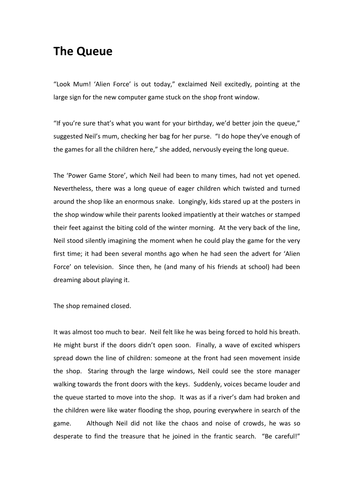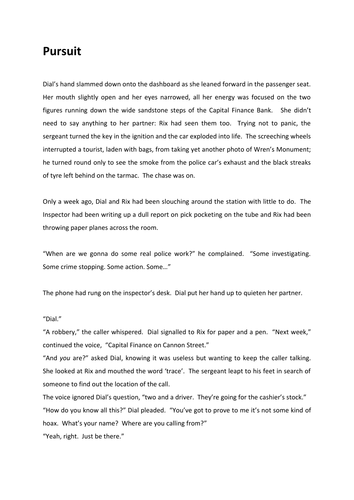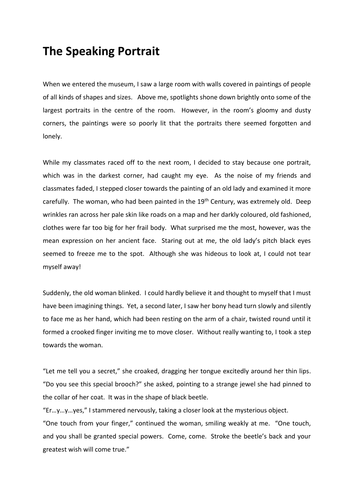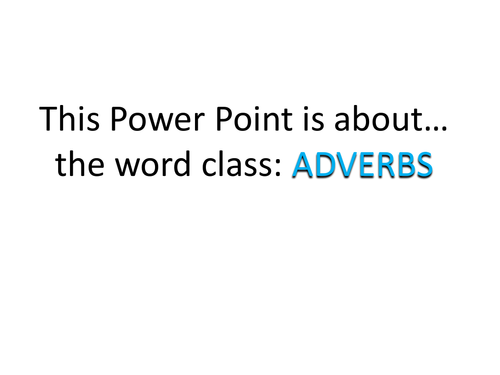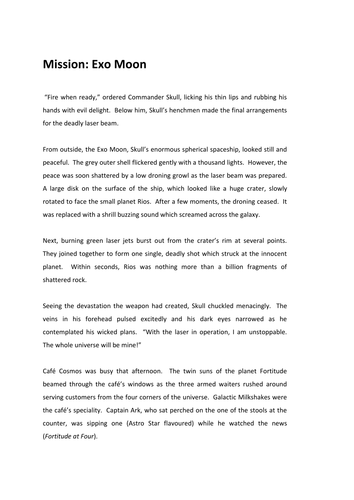
27Uploads
30k+Views
6k+Downloads
All resources

Narrative Writing: The Queue
Neil joins the queue for a shop selling the latest computer game…
A short (2 page) narrative which could be used for guided or shared reading or as a modelled text to teach a variety of objectives (see Teaching Points below).
Teaching Points:
GRAMMAR: past tenses; fronted adverbials; adjectives and adverbs for descriptive detail; connectives (contrast and time); relative clauses; 3rd person narration
PUNCTUATION: commas around clauses; exclamation and question marks; speech marks; brackets
STRUCTURE: paragraphing, including short paragraphs and sentences for dramatic effect; balance of action, dialogue and setting
CONTENT & THEME: build of excitement; character; resolution with surprise; question to the reader; figurative language (simile, metaphor)

Narrative Writing: Pursuit
Two police officers chase bank robbers across London…
A short narrative (4+ pages) which could be used for guided or shared reading or as a modelled text to teach a variety of objectives (see Teaching Points below). It comes with a plan of the story using OBDER (opening, build-up, dilemma, events, resolution). The story uses flashbacks which might be useful for modelling ‘greater depth’ writing.
Teaching Points:
GRAMMAR: past tenses (including past perfect); fronted adverbials; adjectives and adverbs for descriptive detail; connectives (contrast and time); relative clauses; 3rd person narration; complex sentences
PUNCTUATION: commas around clauses; exclamation and question marks; speech marks; semi colons
STRUCTURE: paragraphing; short paragraphs and sentences for dramatic effect; balance of action, dialogue and setting; use of flashback; resolution links back to opening
CONTENT & THEME: action, chase; character (police heroes, villains); figurative language (similes); geographical detail

Narrative Writing: The Speaking Portrait
During a dull school trip to an art gallery, the narrator sees one of the portraits being to move…
A short narrative (2 pages) which could be used for guided or shared reading or as a modelled text.
Teaching Points:
GRAMMAR: past tenses; fronted adverbials; adjectives and adverbs for descriptive detail; connectives (contrast and time); relative clauses; first person narration; rhetorical questions
PUNCTUATION: commas around clauses; exclamation and question marks; speech marks; ellipsis
STRUCTURE: paragraphing (opening, build-up, events, resolution); balance of action, dialogue and setting
CONTENT & THEME: stepping into another world; setting based opening; character (old lady in portrait); cliff-hanger ending; figurative language (similes)

Grammar Explained: Verbs
A Power Point which explains the function of verbs.
A task sheet with questions about verbs. An exercise for students to complete after the presentation. Answers are included.
You can purchase the whole set of these Power Points (11 in total) about different grammar points or punctuation marks. It’s a resource called ‘Grammar & Punctuation Explanations’. There’s also a whole set of task sheets like the one here with each exercise corresponding to the Power Point. It’s called ‘Grammar & Punctuation Exercises’.

Grammar Explained: Adverbs
A Power Point which explains the function of adverbs.
A task sheet with questions about adverbs. An exercise for students to complete after the presentation. Answers are included.
You can purchase the whole set of these Power Points (11 in total) about different grammar points or punctuation marks. It’s a resource called ‘Grammar & Punctuation Explanations’. There’s also a whole set of task sheets like the one here with each exercise corresponding to the Power Point. It’s called ‘Grammar & Punctuation Exercises’.

Narrative Writing: Exo Moon
Can Captain Ark and his crew stop Commander Skull from destroying the galaxy?
The beginning of a science fiction (think Star Wars) narrative (2.5 pages) which could be used for guided or shared reading, as a modelled text or as an opening prompt for students to continue.
Teaching Points:
GRAMMAR: past tenses; fronted adverbials; adjectives and adverbs for descriptive detail; connectives (contrast and time); relative clauses; 3rd person narration
PUNCTUATION: commas around clauses; exclamation and question marks; speech marks; brackets
STRUCTURE: paragraphing, balance of action, dialogue and setting
CONTENT & THEME: science-fiction; character (hero, villain); figurative language (simile)

Snow Day: Snowbound Texts
After a heavy snowstorm, staff and students at a school have been forced to spend the night, entirely cut off from the outside world…
Here are 5 texts which describe the experience:
It’s Snowing!: a story describing the the reaction of students as the snow begins to fall at school.
Night: a poem describing the atmosphere as students try to sleep in a classroom.
A Search Party: a discussion text outlining arguments for and against sending out a search party to look for help.
Expedition: an action story in which a search party attempt to brave the outside.
Safe at Last!: a news report detailing the rescue of the staff and students.
All brilliantly illustrated by Nick Hilditch
These texts could be used in a variety of ways:
exploring and comparing different text types or genres;
texts for whole class or guided reading;
the basis of reading comprehensions;
modelled texts for students’ own writing.
Language features:
Narrative Writing: past tenses, including past perfect; fronted adverbials; adjectives and adverbs for descriptive detail; coherence; relative clauses; commas around clauses; semi-colons; colons; ellipsis; inverted commas; paragraphing, including short paragraphs and sentences for dramatic effect; balance of action, dialogue and setting; themes of adventure, rescue, overcoming fear; character description; figurative language (simile, metaphor).
Poetry: metaphor; figurative language; personification; contrasts; patterns; alliteration; repetition.
Discussion: formal writing; direct address; objectivity; quotations; sentence adverbs; punctuation range.
News Report: layout; report structure; direct and reported speech; formal language.

